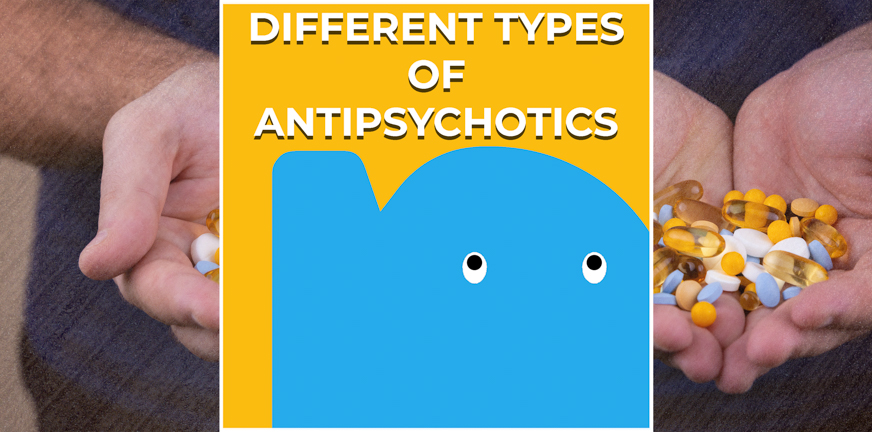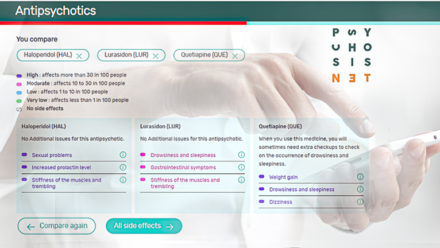
Clinicians make a distinction between two types of antipsychotics: the typical/classical or “first generation” (older medicines) and the atypical or “second generation” (newer medicines). The difference between both types is mostly in their side effects and to a lesser degree in their mechanism of action.
What medicine works for which person is highly individual. There are no guarantees about what side-effects you might experience or how the medicines will work out for you. The only way to find out is to try them. This means that the first medicine you get, might not immediately be the best for you personally.
When you have been taking antipsychotics for a few weeks and the side effects are too heavy or negative, ask your doctor or psychiatrist if there are other medicines you could try.
“First generation” antipsychotics
The classical, or “first generation” antipsychotics, were the first of their kind. They have been prescribed since the 1950s and for a long time were the dominant medicines for treating psychosis.
The following medicines are some of the most common classical antipsychotics. They are listed by their active ingredient, with the trade names in brackets:
- Bromperidol (Impromen);
- Chlorprothixene (Truxal);
- Chlorpromazine (Largactil);
- Clopixol – depot injection;
- Fluanxol – depot injection;
- Fluphenazine (Anatensol);
- Flupenthixol (Fluanxol);
- Fluspirilene (Imap);
- Haldol decanoas – depot injection;
- Haloperidol (Haldol);
- Impromen decanoas – depot injection;
- Levomepromazine (Nozinan);
- Penfluridol (Semap);
- Perphenazine (Trilafon);
- Pericyazine (Neuleptil);
- Pimozide (Orap);
- Pipamperone (Dipiperon);
- Trifluoperazine (Terfluzine);
- Sulpiride (Dogmatil);
- Zuclopentixol (Cisordinol).
“Second generation” antipsychotics
“Second generation” antipsychotics evolved from the first generation of medicines. They may cause fewer of the typical side effects of classical antipsychotics (particularly movement disorders), but come with other side effects such as weight gain and higher cholesterol.
The following medicines are some of these “second generation” antipsychotics. Listed by their active ingredient, with trade names in brackets:
- Aripiprazole (Abilify);
- Aripiprazole (Maintena) – depot injection;
- Clozapine (Leponex);
- Paliperidone (Invega) – depot injection;
- Paliperidone palmitate (Xeplion, Trevicta) – depot injection;
- Olanzapine (Zyprexa);
- Quetiapine (Seroquel);
- Risperidone (Risperdal);
- Risperdal (Consta) – depot injection;
- Sertindole (Serdolect);
- Sulpiride (Dogmatil);
- Lurasidone (Latuda).
Clozapine
Clozapine is a “second generation” antipsychotic that seems to work somewhat differently than the other medicines. It is often used with people who are “therapy resistant”, meaning that other medicines do not work for them.
Clozapine generally is effective, but has some drawbacks. A rare side effect of clozapine is that it can suppress the production of white blood cells. This could affect your immune system and therefore it is important to take regular blood tests when using Clozapine.
External websites:
- Medline Plus Information about specific medicines and patient leaflet




